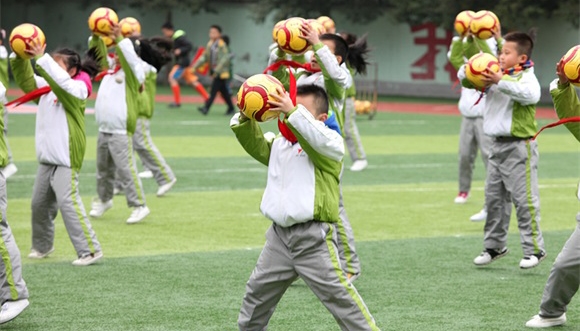Over the past thirty years, Chinese children have reported an obvious decrease in endurance, strength, speed and lung function, and begun displaying a remarkable increase in obesity and diabetes, according to a nation-wide fitness survey.
A report by the China Youth Daily revealed that in the year 2013, China already had 120 million obese adolescents under 18 years old. Children under 5 years old residing in developed Chinese cities showed a growth in obesity rates from 5.3% in 2005 to 8.5% in 2010.
Another survey by Shanghai University of Sport shows that Chinese children have become more reluctant to do physical exercise with age. Only 57.8% students in high schools have grasped “at least 2 sports of lifelong benefit”, as China suggested in an official document.
Why are Chinese children facing poorer health these years? It is largely because of a lack of friendly culture for sports education on a long-term basis, and that culture is the foundation of a business, said Xu Xiaodong, head of the Press and Publicity Department of the Chinese national sports governing body.
As Ren Hai, an officer from the Chinese national sports governing body, pointed out, only one teenager in every 64,000 people in China is playing football, while the proportion for Japan, Netherlands and the United Kingdom is 1:186, 1:33 and 1:70 respectively. As shown in a 2015 data analysis, there were only 21,000 registered football teenagers in China, including 14,000 men’s football players and 7,000 women’s football players.
Undoubtedly, China has thus decided to boost its physical education initiatives. In May 2016, China’s State Council released a statement to further promote physical education in schools and improve students’ physical health. The Council suggests that schools, families, communities and society work closely to make sure every student attains at least one hour of exercise every day, urging schools to improve their physical education conditions to a national level by 2020.
Also in 2015, China listed sports education as an important part of China’s Football Reform Plan. The Plan hopes that China can increase its football schools from more than 5,000 to 20,000 by 2022 and to 50,000 by 2025, which also includes a proportion of feature schools for women’s football education.
However, some local educational institutes have misunderstood the real meaning of campus sports. That is why some people have dreamed up a physical education plan around “Football Exercise”, which is more a kind of radio calisthenics with a ball in the player’s hand. Some schools in Hunan Province have even added Football Exercise, Football Required Courses and Football Credit Courses in their future schedule. This may make PE a responsibility rather than an interest for children.
For some experts, China aims to cultivate children’s interest in professional sports, instead of making physical education a burdensome task. Therefore, the country has to avoid formalism in campus sports. Officer Ren believed that campus football should work for children’s fitness, instead of the other way around.
According to a Quora respondent, in America, physical education is seen as a tool to improve the individual whereas, in China, it is seen as a tool to improve the state. All the other differences in training, methodology and philosophy, stem from this fundamental difference of intent.
Wang Qi, General-Secretary of Beijing Olympic Culture Promotion Association, sees younger generations as the reserves for Chinese professional sports. In his opinion, China should set up a healthy pyramid-like football model, which may consist of 16 Chinese Super League clubs, 20 China League One clubs, China League Two clubs, 100 amateur clubs, 1,000 high school clubs, 10,000 primary school clubs… while in fact, the traditional PE system in China is in an inverted pyramid-like model.
By contrast, professional sports training companies have developed rapidly during the past two years. As we have written before, from the start of 2016 to August 2017, there were 24 sports training-based start-ups completing their first-stage financing.
Affected by the current state of campus sports education, Chinese students are clearly facing fitness problems due to academic pressure, unhealthy lifestyles and other factors. As China has put a strong emphasis on sports education in recent years, we have to follow through and carry out the policies by combining PE education with sports training business in a proper way.
Proofread by William Logsdon
